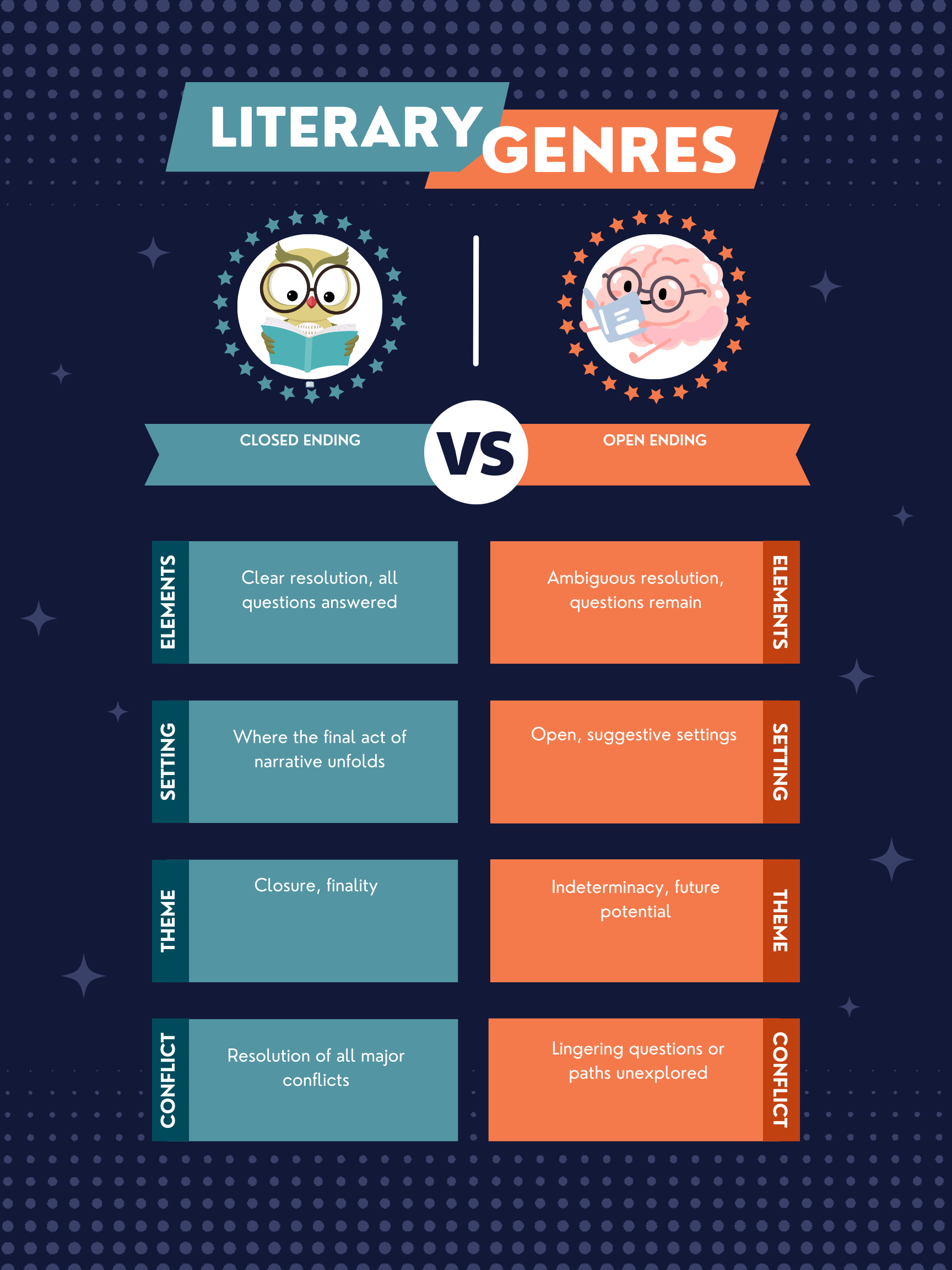A Closed Ending resolves all storylines and questions, leaving no ambiguity; An Open Ending leaves some questions unanswered, allowing for reader interpretation.
Endings can profoundly impact a narrative’s reception and the lasting impression it leaves on its audience. Let’s explore the nuances of these two approaches. 📖➡️❓
Closed Ending
Closed endings tie up all loose ends, providing resolution to the main conflict and subplots. This type of ending offers satisfaction and a sense of completion. Agatha Christie’s “Murder on the Orient Express” is a classic example, where the mystery is solved and the murderer is revealed, leaving no lingering questions.
Open Ending
Open endings leave some aspects of the story unresolved or ambiguous, encouraging readers or viewers to draw their own conclusions or speculate about characters’ futures. The ending of “Inception” by Christopher Nolan, with its spinning top, is a famous example, leaving audiences debating the protagonist’s reality.
Summary
| Literary Device | Definition | Purpose | Usage | Relevant Examples |
|---|---|---|---|---|
| Closed Ending | Resolves all storylines and questions, leaving no ambiguity. | To provide a conclusive and satisfying resolution to the story. | Mysteries, romances, most classical literature. | “Murder on the Orient Express” by Agatha Christie. |
| Open Ending | Leaves some questions unanswered, allowing for interpretation. | To provoke thought, discussion, and personal interpretation. | Ambiguous narratives, some modern literature and films. | “Inception” by Christopher Nolan. |
Writing Tips
For Closed Ending:
- Plan Your Resolution: Know how all story threads will tie up from the beginning.
- Satisfy the Reader: Ensure the resolution is satisfying and aligns with the story’s direction and themes.
- Avoid Loose Ends: Double-check that all questions raised have been addressed.
For Open Ending:
- Maintain Intent: Be intentional with what you leave open and why.
- Balance Ambiguity: Provide enough closure for satisfaction while leaving room for interpretation.
- Encourage Engagement: Use ambiguity to encourage readers to think deeper about the story’s themes or outcomes.
FAQs
Can a story have both a closed and open ending?
Yes, a story can resolve its main plot (closed ending) while leaving certain subplots or character fates open to interpretation (open ending).
How do I choose between a closed and open ending?
Consider your story’s themes, genre expectations, and what you want your audience to feel or think about after finishing your story.
Exercise
Read the following excerpt: “As she walked away from the chaos of what had been her life, the sun breaking through the clouds hinted at new beginnings, though where her path would lead remained unseen.”
Answer: This passage suggests an open ending, providing a sense of movement towards resolution but leaving the specifics of the future ambiguous.
Other Interesting Literary Device Comparisons
- Dynamic vs. Static Characters: Dynamic characters undergo significant internal change throughout a story, whereas static characters remain largely the same.
- First-Person vs. Third-Person Narration: First-person narration is told from the perspective of a character within the story, while third-person narration provides an outside perspective, potentially offering more objectivity or multiple viewpoints.
- Foreshadowing vs. Red Herring: Foreshadowing hints at future events in a way that feels inevitable in retrospect, while red herrings mislead readers/viewers by suggesting false outcomes.
Understanding the impact of closed and open endings can guide writers in crafting narratives that resonate with their intended audience, whether by providing closure or sparking imagination.

